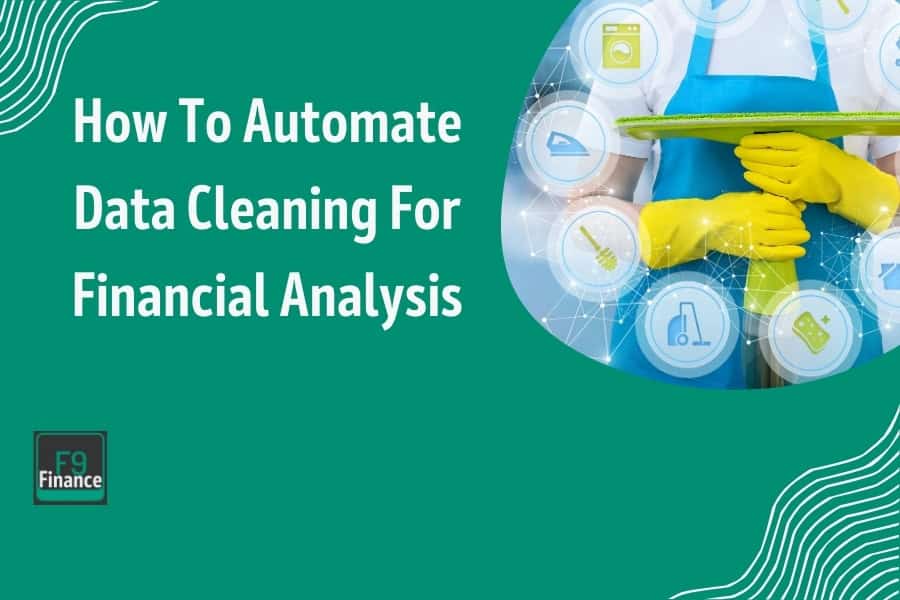I can still vividly recall my first encounter with a financial dataset that seemed to have been thrown into a blender. It was during my initial foray into the finance world, and I was handed a spreadsheet that resembled more of a chaotic painting by Jackson Pollock than a coherent set of numbers. Missing values, duplicated entries, various currencies, and different date formats turned the spreadsheet into a minefield. It became apparent to me that without cleaning up and rectifying these data errors, any analysis I conducted would be as reliable as a weather forecast from a fortune cookie.
That experience served as a crash course in the importance and art of data cleaning. In the finance industry, where precision is crucial, clean data is not just a luxury but a necessity. It serves as the foundation of a sturdy financial house; without it, everything else falls apart. Clean data ensures accurate financial reports, reliable forecasts, and informed decision-making based on solid information rather than guesswork.
Data cleaning is a vital process in data management that involves identifying and rectifying errors, inconsistencies, and inaccuracies in a dataset. It is crucial for ensuring the quality and reliability of data, which is essential for making informed business decisions. This process involves modifying or removing inaccurate, duplicate, incomplete, incorrectly formatted, or corrupted data to make the dataset as accurate as possible.
The benefits of data cleaning are akin to tending to a well-maintained garden. It leads to improved data quality, making analyses based on accurate and reliable information. This, in turn, enhances the accuracy of financial reports and forecasts, reducing the risk of costly errors. Clean data also improves efficiency, saving time and resources in performing analyses and making decisions. It is crucial for customer satisfaction, ensuring relevant and personalized communications.
Clean data is the backbone of accurate financial analysis. Poor data quality can lead to errors in financial analysis, causing structural errors and inconsistencies in databases. It is essential for making informed decisions and crafting reliable financial reports. The impact of poor data quality extends beyond just the numbers, affecting decision-making and strategic success.
Ignoring data cleaning can have disastrous consequences, as seen in the case of the 2012 London Whale incident at JPMorgan Chase, where poor data quality led to massive trading losses. Prioritizing data cleaning is essential for accuracy, safeguarding against poor decision-making and reporting inaccuracies. Quality data is crucial for successful business strategy and decision-making, comprising accuracy, completeness, consistency, and relevance. For example, in your financial dataset, it is essential that the revenue figure accurately reflects the actual revenue earned, without any errors or miscalculations.
Completeness is crucial for a thorough analysis, as missing data can leave significant gaps in your understanding. Consistency ensures uniformity in data formatting and structure, preventing confusion and errors. Relevance ensures that the data is directly applicable to the questions you are trying to answer or decisions you need to make.
Bad data, such as duplicate entries or inconsistent data formats, can lead to inaccurate analysis and biased results. Spotting data issues early on can prevent these errors from causing problems in your financial reports.
To clean your data effectively, start by assessing its current state for completeness, consistency, accuracy, and validity. Use techniques such as removing duplicates, handling missing values, and standardizing formats to tidy up your dataset. Validate your cleaned data by cross-verifying it with original sources and implementing validation rules.
Automating data cleaning processes can save time and reduce the likelihood of human error. Tools like Python’s Pandas library or Excel macros can help streamline repetitive tasks and ensure your data is ready for analysis without any hassle. Automating Data Cleaning for Financial Data
When dealing with inconsistent date formats, a Python script was used to transform them into a uniform format, ensuring that the report was coherent and accurate. This transformation not only made the data more understandable but also instilled confidence in the figures presented.
The next challenge involved a messy budget spreadsheet that needed to be streamlined into a user-friendly analysis tool. The spreadsheet had various currency formats and inconsistent data entries. The first step was standardizing all currency entries to USD using a conversion tool that updated figures automatically based on the latest exchange rates. Excel formulas were then utilized to create a dashboard summarizing key budget metrics like expenses, revenue, and profit margins. Data validation constraints were set up to ensure future entries adhered to the required formats, resulting in a streamlined tool for quick and insightful budget analysis.
However, not all data cleaning projects end successfully. One project went awry due to assumptions made without proper verification, leading to inaccurate analysis that impacted decision-making. The lesson learned was to always verify missing data with stakeholders or reliable sources, implement cross-verification checks, and set up a feedback loop to catch errors early on.
To automate data cleaning, various tools and software can be used. PowerQuery is a versatile tool for Excel and Power BI users, offering functions for basic data import and transformation. Python and R are scripting languages ideal for custom cleaning processes, while specialized software like Trifacta and Talend are designed specifically for data cleaning in finance.
When selecting a tool for data cleaning, consider the dataset size and complexity, user expertise, and budget constraints. Ultimately, choosing the right tool will ensure that financial data is clean, accurate, and ready for analysis.

